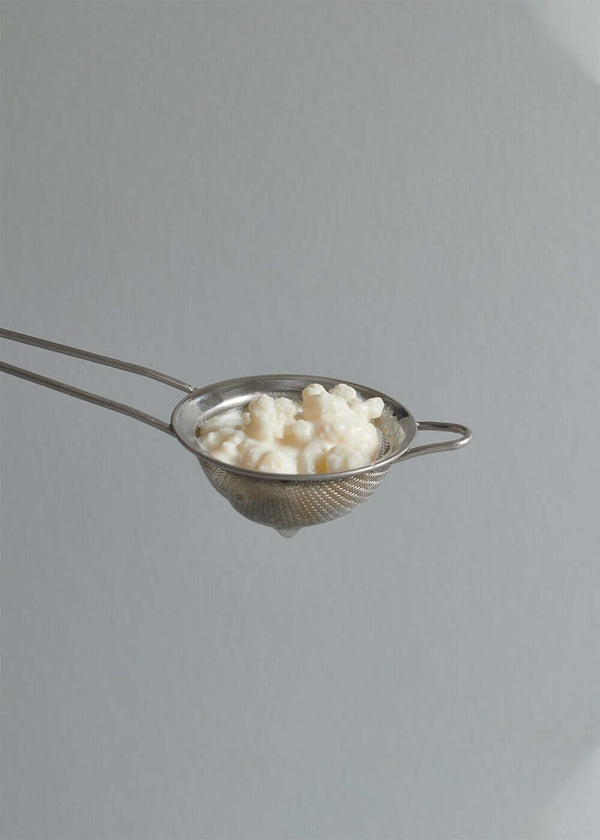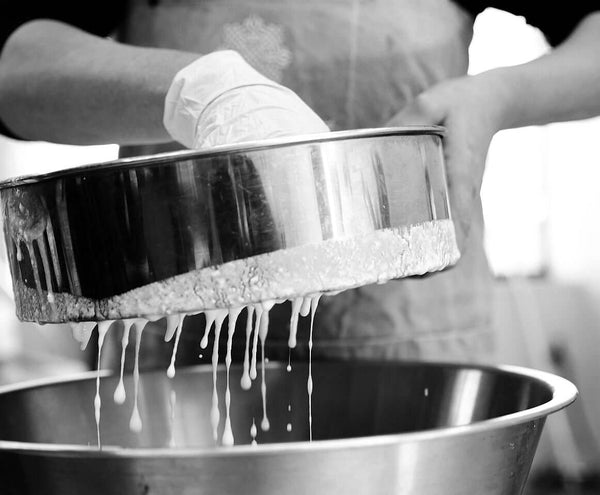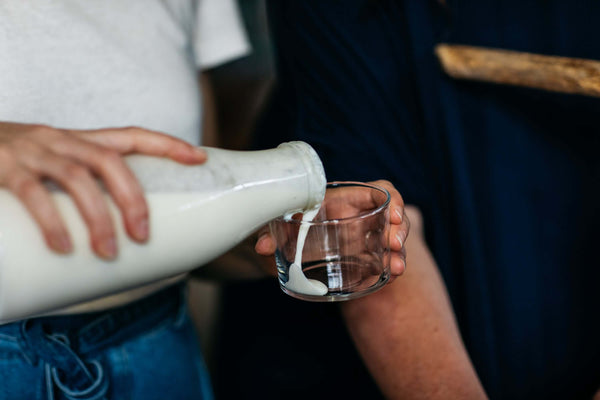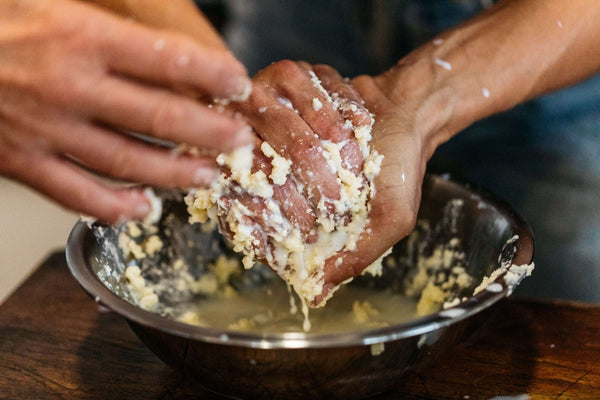Milk Kefir SCOBY
Delivery
We securely ship all SCOBYs, live cultures, and refrigerated items via express post every Monday to Wednesday.
Please note we are unable to ship cold items, SCOBYs and live cultures to PO Boxes or internationally.
In the rare event that any item purchased from our online store arrives faulty, we are committed to providing a prompt replacement or full refund.
FAQs
MILK KEFIR FAQ's
How do I use my 480ml pouch?
You have so many options:
-Drink it straight from the pouch as a ready-to-enjoy milk kefir - (yes! It's a powerful living beverage)
- Use it as a starter culture to make more kefir at home by adding it to 500mls of milk - - Freeze it for later use, make it into labneh, use to culture cream for Creme Fraiche and then to make cultured butter, use in place of buttermilk for pancakes or marinating.
How do I make more kefir from my pouch?
Simply pour the contents of your 480ml pouch into a clean jar, add 500ml of fresh milk, and leave it at room temperature overnight (12-24 hours). You'll have 1 litre of fresh milk kefir! You can repeat this process up to approximately 4 times, creating up to 4 litres of kefir from one pouch.
What type of milk should I use?
Full-cream milk works best, but you can use any dairy milk you prefer. The kefir cultures are most active in whole milk.
How long does the pouch last?
Unopened pouches should be refrigerated and consumed by the date on the packaging. Once opened, use within 3-5 days.
Can I freeze my kefir?
Yes! Our pouches can be frozen for up to 3 months. Thaw in the refrigerator before use.
How do I know when my homemade batch is ready?
Your kefir will thicken and develop a tangy taste after 12-24 hours at room temperature. The longer it ferments, the tangier it becomes—and the more lactose will be consumed by the beneficial bacteria.
Do I need any special equipment?
No special equipment needed! Just a clean glass jar and fresh milk.
What is Milk Kefir?
Milk Kefir is a delicious, probiotic-rich fermented milk drink with a tangy, slightly effervescent taste. It's packed with beneficial bacteria and yeasts that support digestive health and overall wellbeing.
How much Milk Kefir should I drink?
We recommend starting with 100-150ml per day, especially if you're new to fermented foods. This allows your digestive system to adjust to the beneficial probiotics. Once your body has adapted (usually after a week or two), you can increase to 200-300ml daily if desired. Listen to your body and find the amount that works best for you.
Is Milk Kefir suitable for toddlers and elderly people?
Yes! Milk Kefir can be beneficial for all ages. For toddlers (over 12 months), start with just 1-2 teaspoons and gradually increase to 50-100ml per day as they adjust. The probiotics support developing digestive systems and immune health. For elderly individuals, milk kefir is an excellent choice as it's easier to digest than regular milk, provides beneficial probiotics for gut health, and delivers essential nutrients including calcium and protein. As with any dietary change, particularly for very young children or those with health conditions, we recommend consulting with a healthcare professional first.
Is Milk Kefir suitable for people with lactose intolerance?
Many people with lactose intolerance find they can enjoy milk kefir comfortably. During fermentation, the beneficial bacteria and yeasts consume most of the lactose (milk sugar) in the milk, converting it into lactic acid. This process significantly reduces the lactose content, making kefir much easier to digest than regular milk. The longer you ferment your kefir, the more lactose is consumed. However, if you have severe lactose intolerance, we recommend starting with small amounts to see how your body responds.
Can I use this starter with other types of milk like soy, oat, or goat milk?
This dairy milk kefir starter is specifically designed for cow's milk. For coconut milk kefir, we offer a separate coconut milk kefir starter that's optimized for that base. For goat milk kefir, we also have a specialized goat milk starter. Plant-based milks like soy and oat milk require different cultures and won't work effectively with this dairy starter. To ensure the best results and most active probiotics, it's important to use the right starter for your chosen milk type. Browse our range to find the perfect starter for your needs!
Can I cook with Milk Kefir?
Absolutely! Milk Kefir is wonderfully versatile in the kitchen. You can use it just like buttermilk—it adds a delicious tangy flavour to pancakes, baked goods, and works beautifully as a meat tenderizer in marinades. It's also perfect for making refreshing icy poles when blended with fresh fruit. Keep in mind that heating kefir above 36°C will kill the active probiotic bacteria, so while cooked dishes will still have that lovely tangy flavour and all the nutritional benefits, they won't contain live cultures. For maximum probiotic benefits, enjoy your kefir cold, frozen or at room temperature. Check out our recipe section for creative ways to use your kefir!
What beneficial bacteria are in Milk Kefir?
Milk Kefir contains a diverse community of beneficial microorganisms. Common lactobacillus strains include Lactobacillus kefiranofaciens, Lactobacillus kefiri, Lactobacillus acidophilus, Lactobacillus brevis, and Lactobacillus plantarum, among many others. Kefir typically contains 30-50 different strains of bacteria and yeasts working together, making it one of the most diverse probiotic foods available.
It's true - I believe that if you are to choose only one thing to ferment - one SCOBY to take care of - this is the one.
Making milk kefir is one of the simplest and most nutritious ferments. A Milk Kefir SCOBY consumes the lactose in your milk, adding loads of the good stuff - lactic acid bacteria, tryptophan, and a range of other probiotic species! It will make a gorgeous, creamy, life-giving, and gut-enriching drink within a day or two.
You can also use your milk kefir grains to make delicious cultured butter, labneh, smoothies, icy poles, whey soda, and cheeses. I have written about milk kefir in my book Ferment for Good and Wild Drinks, where you'll find recipes and information about this gorgeous culture.
Choose to order only the SCOBY and we'll email you an email with a printable recipe card, or instead choose to get the video tutorial - which includes everything you would learn in a workshop - how to make milk kefir, labneh, collect the whey to make a soda and also - ferment cream with the kefir to make butter. (It's a good deal).
You'll need to feed your SCOBY (make kefir) as soon as possible. You'll need a small jar and 500ml of milk. When ready, have a strainer and another jar to put the milk kefir into while you ferment the next batch.







